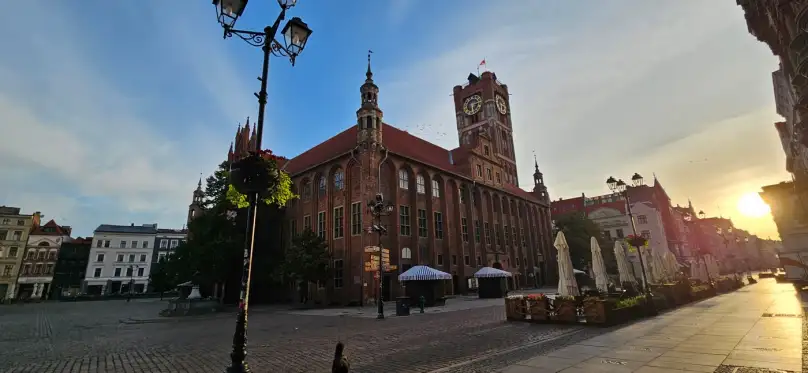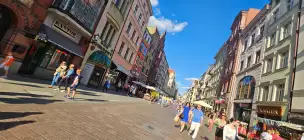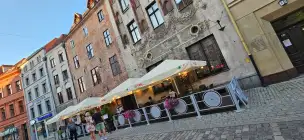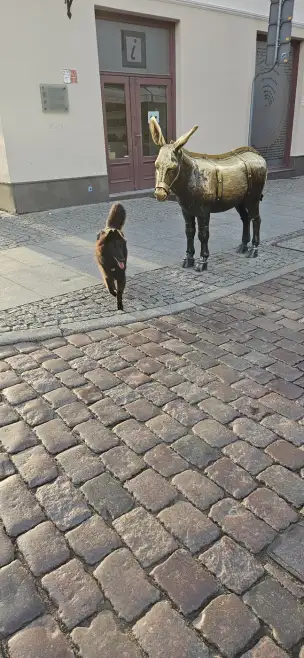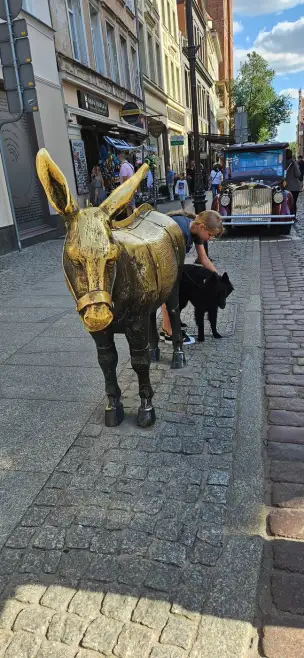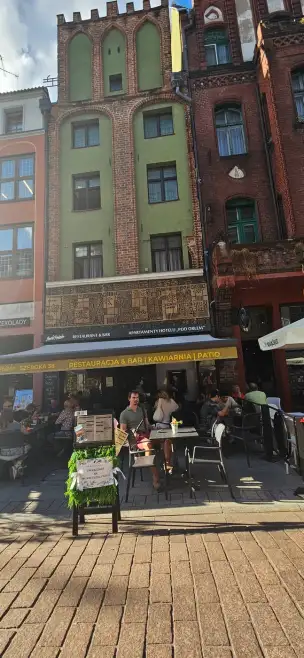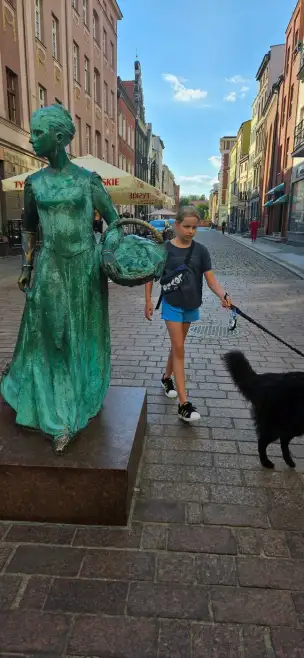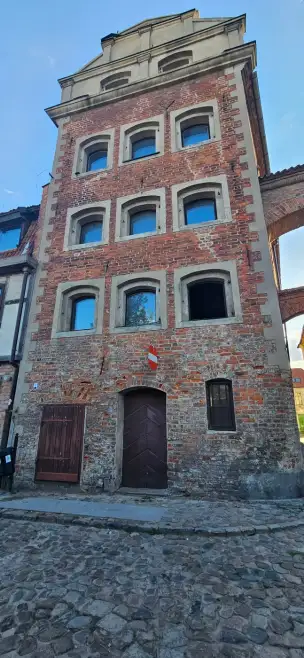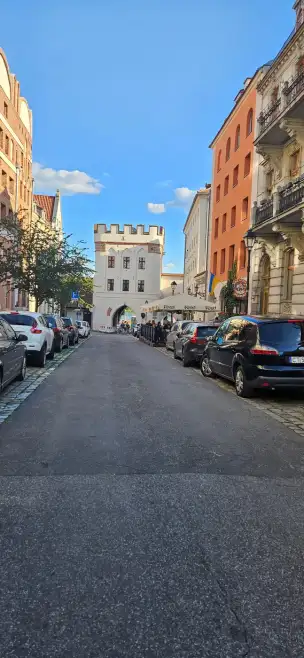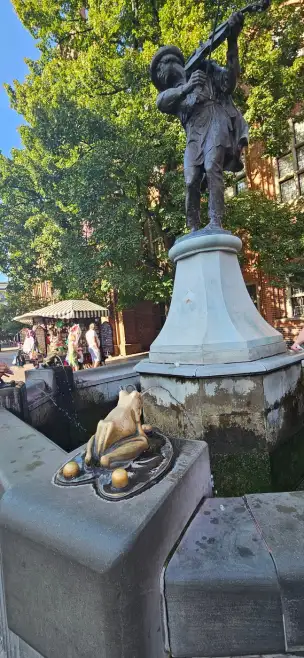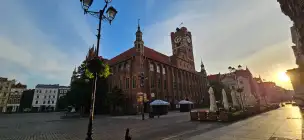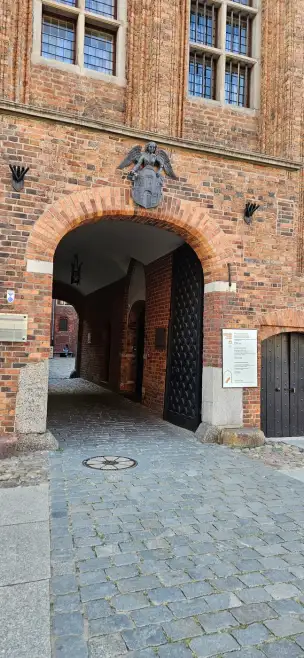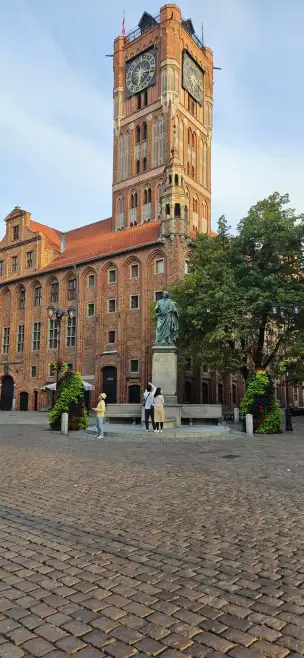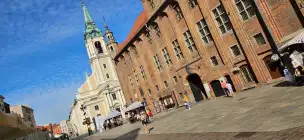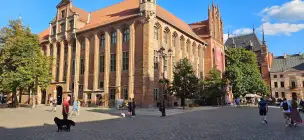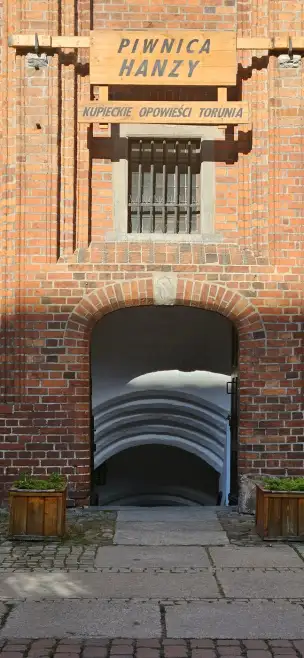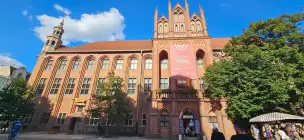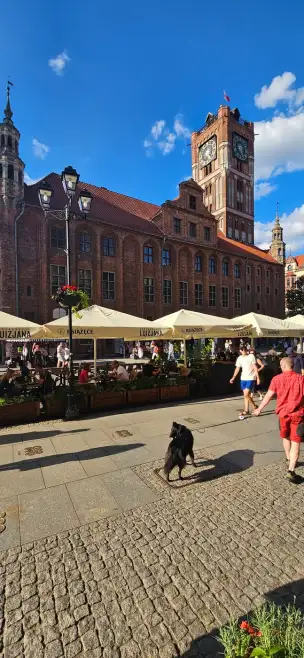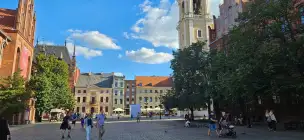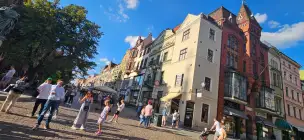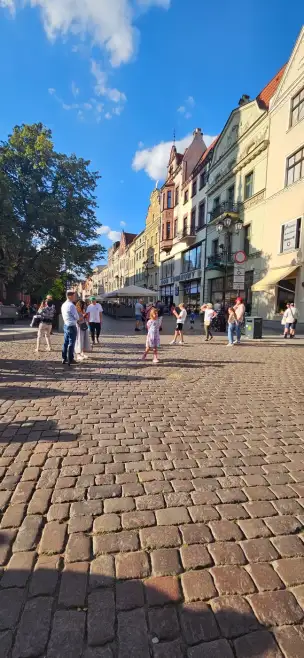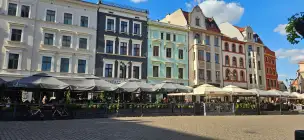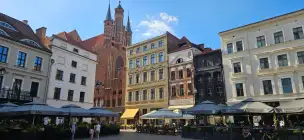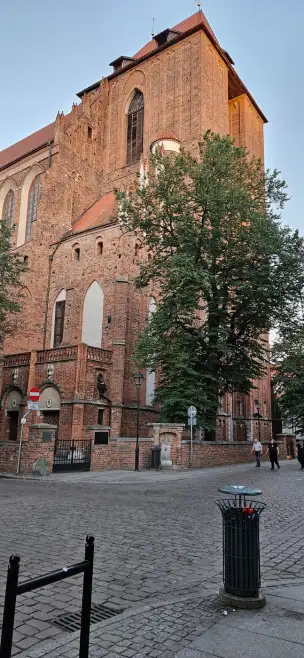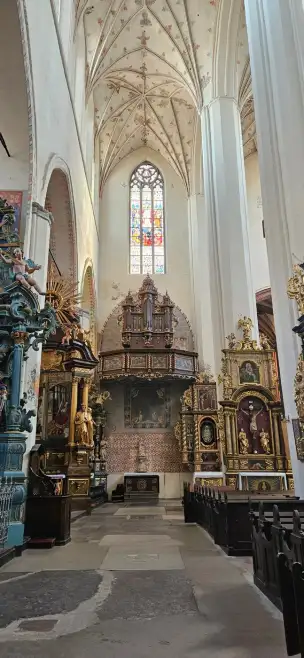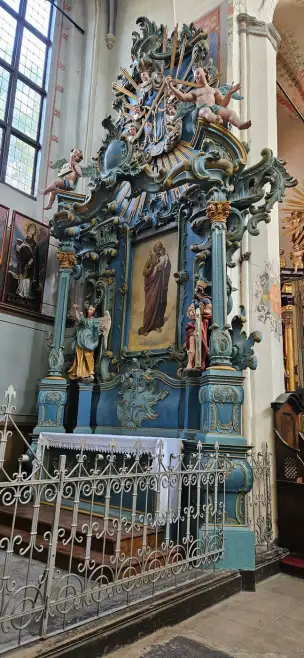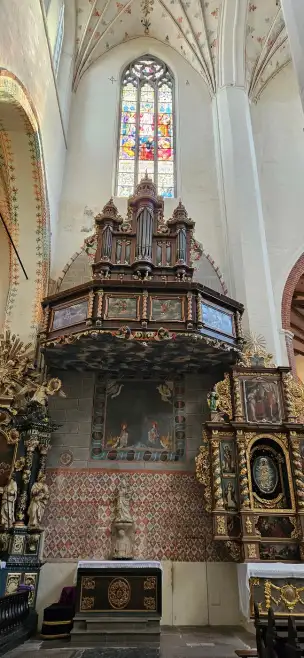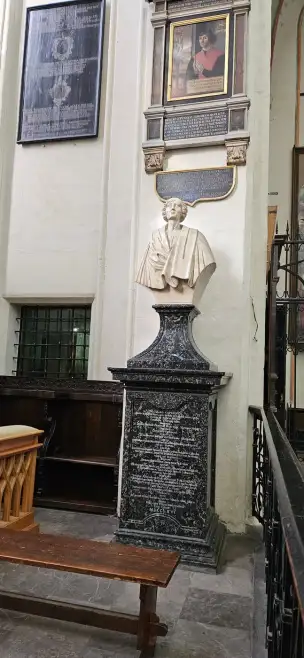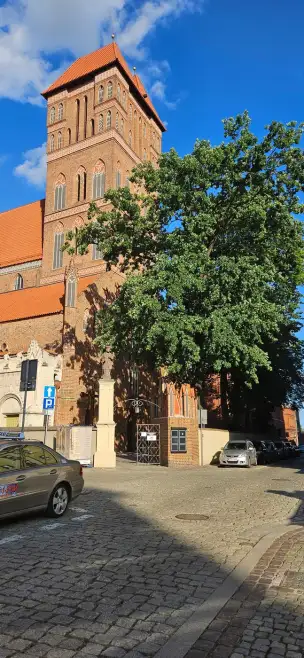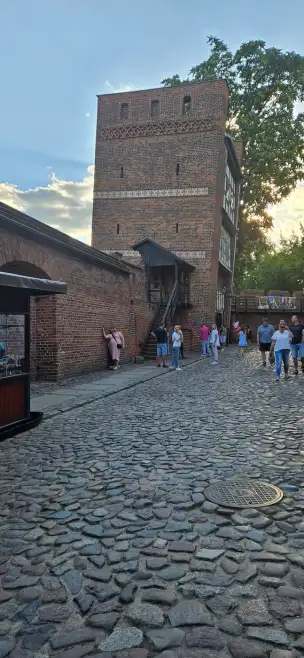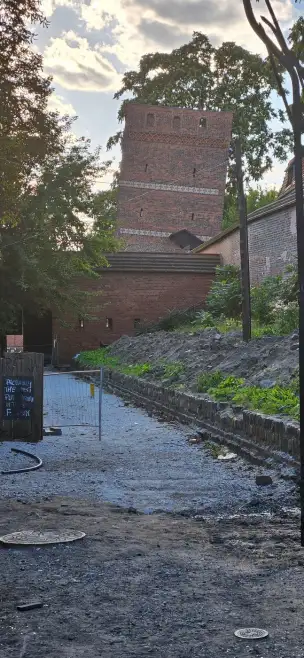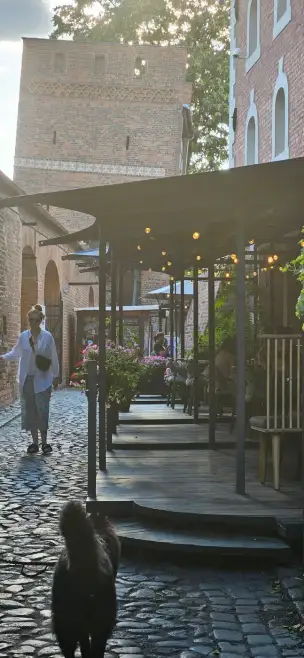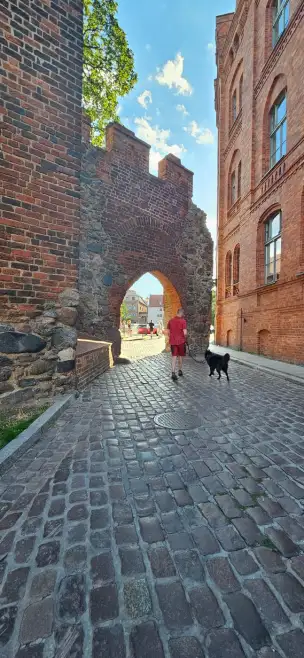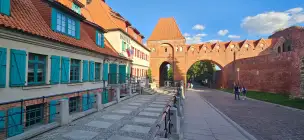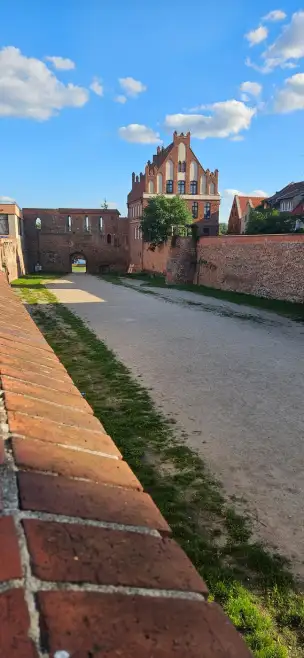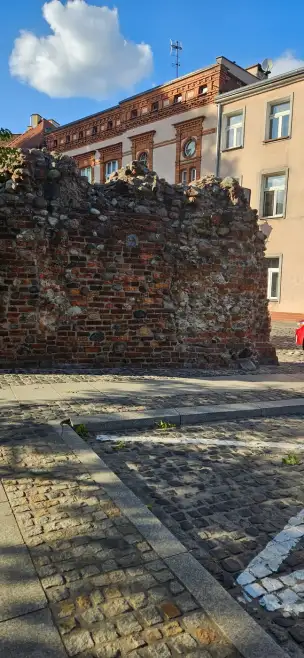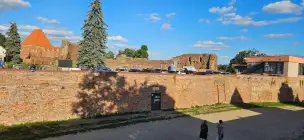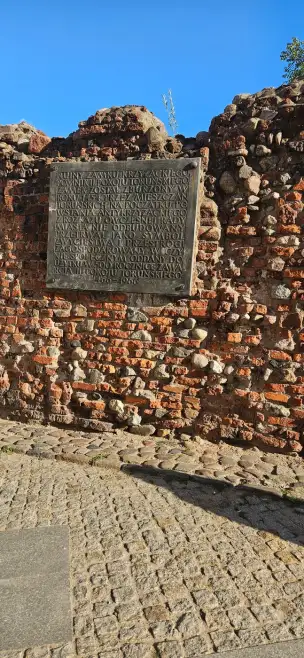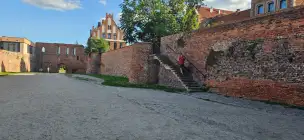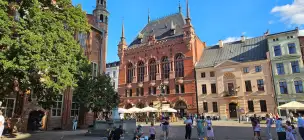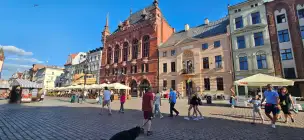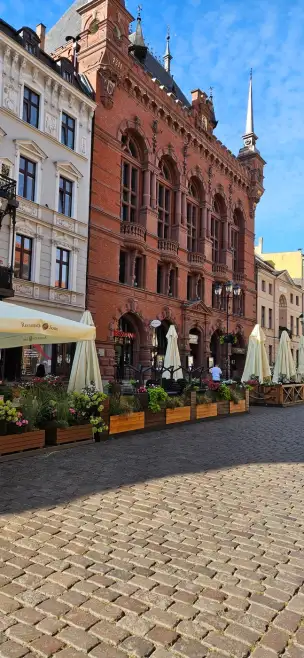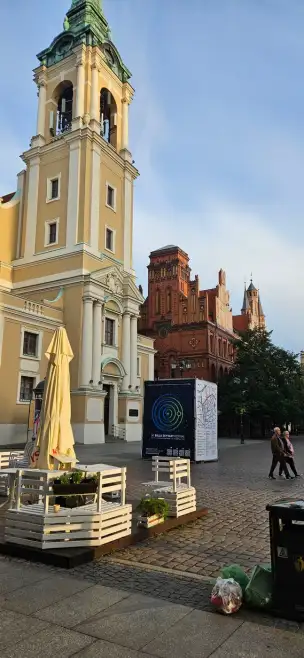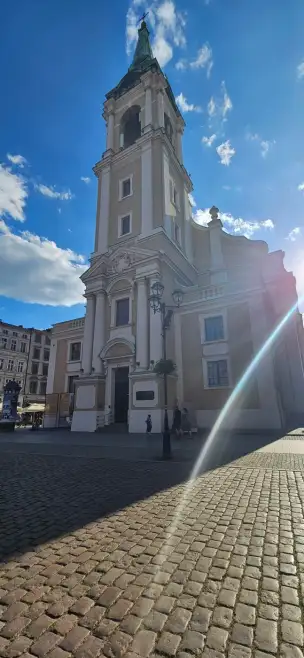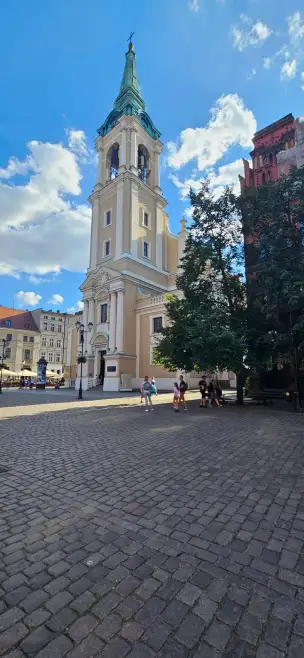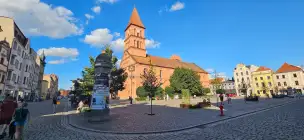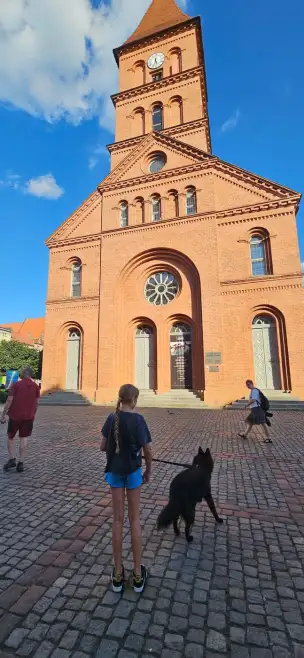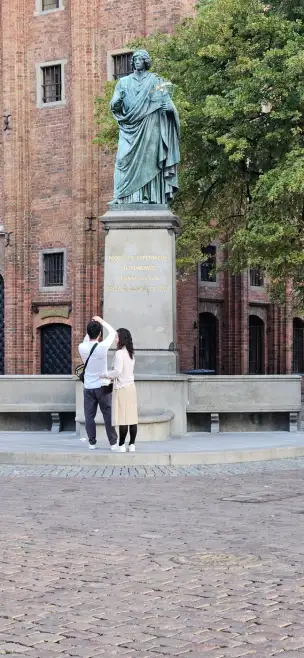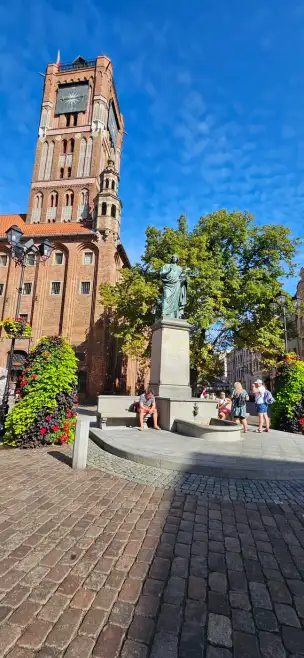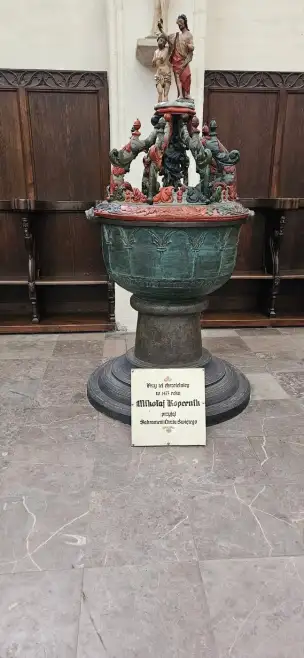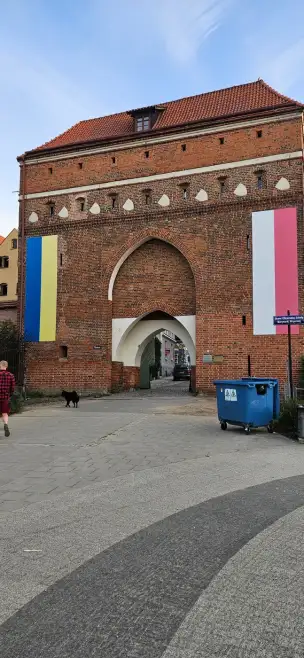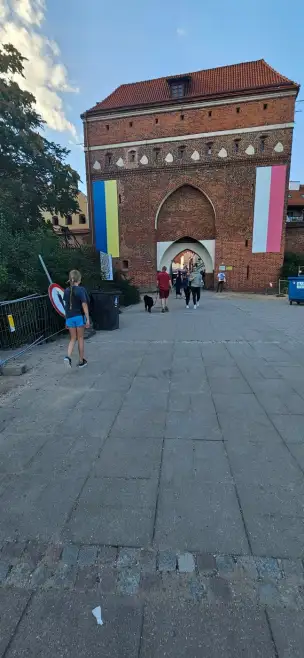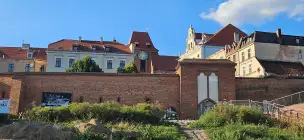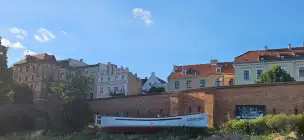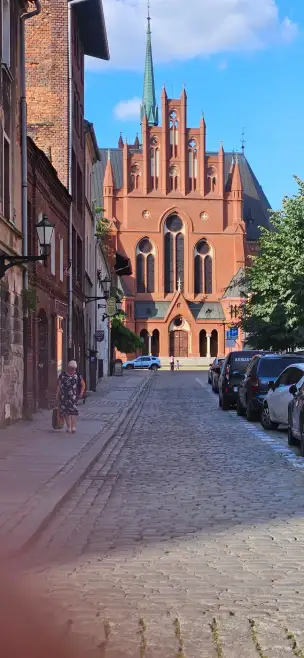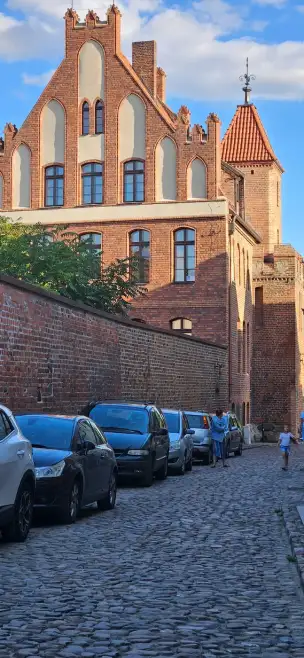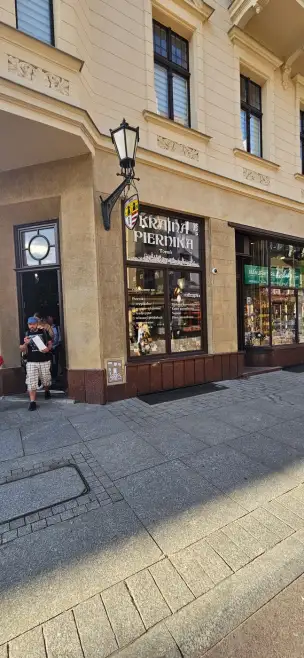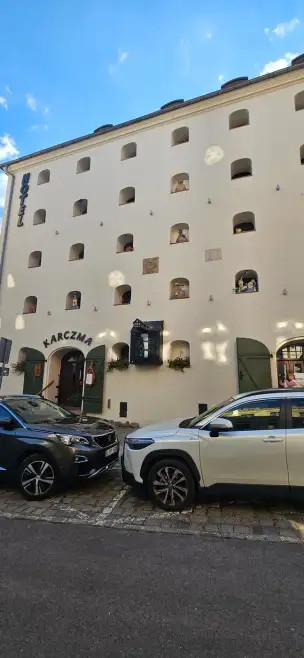A charming city in Poland with a deeply rooted history and a unique architectural character.
Known for its numerous historical monuments, Toruń attracts tourists with its unique charm and rich cultural heritage.
The city is famous for its beautiful Gothic architecture, including the renowned St. John’s Church and the Monastery Gate, which draw history and architecture enthusiasts. Toruń is also the birthplace of the great astronomer Nicolaus Copernicus. The house where he was born is now a museum dedicated to his life and work.
Toruń offers a rich variety of flavors, from traditional Polish dishes to local delicacies. The famous Toruń gingerbread is a must-try treat for every visitor.
Discover the best flights to Poland See current prices and promotions.
Check flights to Poland
Toruń Old Town
Toruń Town Hall
Located in the very heart of the Old Town, on the Old Market Square, the Town Hall is the central point of Toruń’s historic urban complex, which is listed as a UNESCO World Heritage Site.
The Town Hall in its current form was mainly built at the end of the 13th and during the 14th century. The largest reconstruction took place between 1391 and 1399, initiated by the Grand Master of the Teutonic Order, Konrad von Wallenrode. At that time, the Town Hall was developed as a four-winged, internally cohesive structure with a courtyard — a rarity in Europe at that time.
In 1466, the Second Peace of Toruń was signed in the Town Hall, ending the Thirteen Years’ War between Poland and the Teutonic Order — the Kingdom of Poland regained Gdańsk Pomerania. Toruń’s Town Hall also served as a model for other Hanseatic town halls, including the one in Gdańsk.
One of the rooms preserves a portrait of King Stanisław August Poniatowski, who visited Toruń in the 18th century.
Old Town Market Square in Toruń
The Old Town Market Square in Toruń is the heart of the historic Old Town and one of the most beautiful market squares in Poland. Its urban layout and surrounding buildings mostly date back to the Middle Ages, forming a unique complex that was inscribed on the UNESCO World Heritage List in 1997.
The square was laid out in 1252 during the founding of Toruń under the Chełmno Law. From the very beginning, it had the shape of a square about 104 meters on each side — typical for towns established according to German town law.
For centuries, the square was the site of markets, fairs, public gatherings, but also executions — here, in the 17th century, Katarzyna Weisman, accused of witchcraft, was burned at the stake. However, her trial can also be viewed in another light — she was probably a Catholic accused by the Protestant city majority.
Cathedral of St. John the Baptist and St. John the Evangelist
The Toruń Cathedral was built in the Gothic style over many centuries. Its history dates back to the 13th century, and the structure was gradually expanded and modified throughout the years. The first mention of the cathedral dates from 1233.
The cathedral is an example of Gothic sacred architecture and stands out with its impressive façade, tall towers, and numerous architectural details typical of the period. The interior is also richly decorated and contains many valuable works of art, including altars, sculptures, and stained glass windows.
Toruń Cathedral is an important place of worship and serves as the seat of the Roman Catholic Diocese of Toruń. It functions as a cathedral, meaning the main church of the diocesan bishop.
In 1997, the Cathedral of St. John the Baptist and St. John the Evangelist, along with other monuments in Toruń, was inscribed on the UNESCO World Cultural and Natural Heritage List. This recognition honors the historical and architectural value of the site.
The Leaning Tower in Toruń
A medieval Gothic defensive tower that was part of the former city walls of Toruń. It was built in the 13th or 14th century as one of many watchtowers guarding the city’s access from the Vistula River side.
Why is it leaning? Most likely due to unstable, sandy soil by the Vistula, which caused the ground to settle unevenly and tilted the entire structure. The tilt was noticed as early as the Middle Ages, but instead of demolishing the tower, it was adapted for other uses (first residential, then tourist-related).
One of the most famous legends says that the Leaning Tower was built by a Teutonic monk who broke his vow of chastity by falling in love with a woman. As punishment, he had to build a tower that—like his conscience—would never stand straight.
Another story claims that whoever stands with their back and heels against the tower wall and keeps their balance is a righteous and honest person. If they lose balance, they have something to hide 😉. This is a popular tourist attraction and challenge, especially for children and youth.
Teutonic Castle in Toruń
The Teutonic Castle in Toruń is the oldest Teutonic castle in the Chełmno lands and one of the most important fortresses of the early Teutonic State. Although today mostly ruins remain, its historical and organizational significance in the 13th–14th centuries was very high.
Construction began around 1236, shortly after the founding of Toruń and the settlement of the Teutonic Knights in the region. The castle was built on a horseshoe (rondel) plan, rather than the classic rectangular shape, making it unique among Teutonic castles.
It served as the seat of the Toruń commandery — one of the most important in the Teutonic Order’s state.
The castle ruins are open to visitors and house a branch of the Regional Museum with exhibitions about the Teutonic Knights and the castle’s history. Knightly shows, tournaments, and historical reenactments are organized there, and in summer, night tours with torches take place.
Artus Court in Toruń
Artus Court in Toruń is a representative building used for meetings of the city patriciate, ceremonies, banquets, artistic performances, as well as gatherings of brotherhoods and guilds.
The name comes from the legend of King Arthur and the Knights of the Round Table, who in the Middle Ages symbolized morality, honor, and community — values especially important to the wealthy bourgeoisie.
Artus Courts existed in several Hanseatic cities in Northern Europe, particularly in the Baltic region. Both Toruń and Gdańsk had their own Artus Courts because they belonged to the Hanseatic League — a merchants’ association that, besides trade, also promoted shared ideals of bourgeois culture and urban elites.
Church of the Holy Spirit in Toruń
The Church of the Holy Spirit in Toruń is one of the most interesting and elegant sacred monuments in the Old Town — distinguished by its Baroque style, which makes it unique among Toruń’s predominantly Gothic churches. Its history is connected not only with religion but also with education, culture, and turbulent confessional relations.
From the 16th century, Toruń was mostly Lutheran, with Catholics being a minority, especially among the patriciate. In the second half of the 17th century, King John III Sobieski and Queen Maria Kazimiera sought to strengthen the position of Catholicism — including by inviting the Jesuits.
The church was built between 1754 and 1756 on the site of an earlier Holy Spirit chapel that had existed there since the 14th century but was taken over by Lutherans. The new building was partially funded by royal and noble donations.
In 1724, the so-called Toruń Tumult took place — religious riots between Protestants and Catholics. As a result of King Augustus II the Strong’s intervention, the royal court sentenced Protestant city officials, and the Jesuits gained the right to build a new church. This incident had great political significance — it intensified confessional animosities and was widely discussed in Europe.
For many years, the church served as the university church of Nicolaus Copernicus University. Academic masses, organ concerts, recitals, as well as city and anniversary events, are held here.
Former Evangelical Church of the Holy Trinity on the New Town Market Square
With the growth of the evangelical community in the 19th century, there was a need to build a new church for the increasing number of worshippers. Construction began between 1870 and 1874 and took place on the New Town Market Square.
It served as a parish church for Protestants, especially descendants of German settlers and townspeople.
After 1945 and demographic changes, particularly the expulsion of most of the German population, the evangelical parish in Toruń significantly diminished. The church building was taken over by the state and repurposed for other uses.
In the post-war years, it served various functions including storage, cultural, and service purposes. Currently, the building is mainly used as a concert hall and venue for artistic events.
Nicolaus Copernicus
Nicolaus Copernicus was born on February 19, 1473, in Toruń, in a townhouse on St. Anne’s Street (today Kopernika Street 15) — which now houses the Copernicus House Museum. He came from a wealthy merchant bourgeois family. His father, also named Nicolaus Copernicus, was a citizen of Toruń and traded, among other things, in copper.
Nicolaus Copernicus’s ties to Toruń and his origins are very interesting, showing how multicultural, multinational, and transregional the environment of the urban elites and intellectuals of late medieval Poland was. The Copernicus family had roots both in the Holy Roman Empire and Silesia, and his relatives held high church and state offices in the Kingdom of Poland.
Although he spent most of his life in Warmia (Frombork, Olsztyn, Lidzbark), Toruń was his hometown, with which he maintained a sense of identity. His baptism took place in St. John’s Church (today the Cathedral Basilica of St. John the Baptist and St. John the Evangelist).
Monastery Gate in Toruń
The Monastery Gate in Toruń is one of the most interesting parts of the medieval city fortifications, which has survived to this day as an important element of the historic architecture and a symbol of the city’s past.
The gate was built in the 14th century during a period of intensive expansion of Toruń’s city walls. It served as the main entrance from the southwest, leading toward the monastery and the areas outside the city.
In the Middle Ages, it was not only a defensive structure but also a place for controlling the movement of people and goods.
City Walls
Garrison Church of St. Catherine of Alexandria
A neo-Gothic church from the late 19th century that served as a garrison church for both the Prussian Army and the Polish Army. It was built between 1894 and 1897 from red brick, featuring a distinctive tower standing 86 meters tall—the tallest in Toruń.
Court of the Brotherhood of St. George
The Court of the Brotherhood of St. George in Toruń is the historic seat of one of the most influential and distinguished knightly brotherhoods operating in Hanseatic cities, including Toruń. This brotherhood played an important role in the social, military, and religious life of the city.
The Brotherhood of St. George was likely established in Toruń as early as the 13th–14th centuries. Its members pledged to defend the city and uphold the cult of St. George — the patron saint of knights and defenders.
Toruń Gingerbread
Toruń gingerbread is one of the most famous and recognizable Polish culinary traditions, becoming not only a symbol of Toruń but of the entire country. It is a true gem among regional confectionery products, valued for centuries for its unique taste, recipe, and history.
Gingerbread has been baked in Toruń since the Middle Ages, at least since the 14th century. The city gained fame through trade in honey, spices, and herbs imported from the Middle East and Asia, which enabled the creation of unique recipes.
Toruń gingerbread was exported to many European countries — it was an important trade good and a luxury delicacy. The Toruń gingerbread guild had very strict rules regarding the production and quality of gingerbread.
The Swedish Granary in Toruń
A medieval granary (grain warehouse) located on the bank of the Vistula River, on Bulwar Filadelfijski Street.
The name "Swedish" comes from the fact that the granary survived the Swedish Deluge (1655–1660) in relatively good condition, while many other buildings were destroyed. It is one of the best-preserved granaries in Toruń and is listed as a historic monument.



